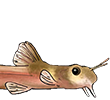Dead cory, need help please
Dead cory, need help please
I'm new to the forum, but not new to the aquarium hobby.
About an hour ago I walked into my living room to find one of my panda cory doing the spiral of death swim. Upon closer inspection I see the cory's tail fin is nearly gone and where the tail and fin meet, there are red markings (looks like internal bleeding). I have never seen this before and I have no idea what to do with the whole tank, should I medicate it or should I just leave it alone? If I was to medicate, what medication should I buy as I have none for corydoras at the moment. This cory died without showing the symptom of sunken stomach (just tail fin rot or some sort).
The tank is 10 gallons and the amonia and nitrite levels are undetectable, nitrate is around 10ppm. Water temp currently is at 84F and peaked yesterday and today at 90F. The tank has been set up for about 8 months. Its a corydora tank (panda and albino cories 4 of each). The PH is 7.4. The filtration system is Penguin Mini. What should I do? Thanks in advance.
About an hour ago I walked into my living room to find one of my panda cory doing the spiral of death swim. Upon closer inspection I see the cory's tail fin is nearly gone and where the tail and fin meet, there are red markings (looks like internal bleeding). I have never seen this before and I have no idea what to do with the whole tank, should I medicate it or should I just leave it alone? If I was to medicate, what medication should I buy as I have none for corydoras at the moment. This cory died without showing the symptom of sunken stomach (just tail fin rot or some sort).
The tank is 10 gallons and the amonia and nitrite levels are undetectable, nitrate is around 10ppm. Water temp currently is at 84F and peaked yesterday and today at 90F. The tank has been set up for about 8 months. Its a corydora tank (panda and albino cories 4 of each). The PH is 7.4. The filtration system is Penguin Mini. What should I do? Thanks in advance.
Try Interpet No 9. it's meant for internal bacteria. This seems like a classic case of internal pathogens acting up on weaker fishes.
Normally it acts on one or two weaker ones... Try a partial water change of abt 20% to lower any chances of other pathogens or nitrate levels, this may help the rest to fight the bacteria better.
Normally it acts on one or two weaker ones... Try a partial water change of abt 20% to lower any chances of other pathogens or nitrate levels, this may help the rest to fight the bacteria better.
- Coryman
- Expert
- Posts: 2119
- Joined: 30 Dec 2002, 19:06
- My articles: 12
- My catfish: 5
- My cats species list: 83 (i:3, k:0)
- My BLogs: 1 (i:0, p:46)
- Spotted: 194
- Location 1: Kidderminster UK
- Location 2: Kidderminster, UK
- Interests: Cory's, Loricariids, photography and more Cory's
- Contact:
My first suggestion is to get the temperature down by ten degrees, there is no need for it to be that high for the species you have, all that the warmer water is doing is speeding up the fishes metabolic rate. With regard to treatment I would be inclined to treat with Melafix, its an organic medication that I have found to be very good for many of the common ailments. The only added requirement when using Melafix is to add an air stone to maximise the oxygen absorption while using the treatment.
Ian
Ian






